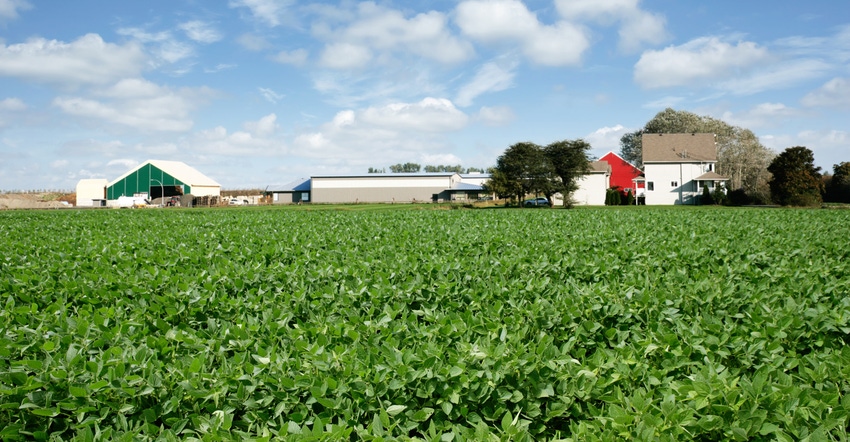May 13, 2020

When the COVID-19 pandemic started affecting everyday life in Ohio and across the country, no one was prepared. Everyone was told to shelter in place to help slow the spread of the virus so medical personnel wouldn’t be overwhelmed. Schools and restaurants closed overnight.
The well-oiled machine that is the food supply chain was suddenly left without half of its market, as demand for meat, dairy, eggs and more allocated for restaurants and schools instantly shifted, as consumers ran to grocery stores and started stocking up. Repackaging half the food supply to send to grocery stores instead of restaurants is something that has never happened before, and the supply chain was not ready for the necessary transition.
More recently, worker illnesses have shuttered or slowed meat processing plants across the country. Concerns about a sustainable food supply continue to grow. Stories of milk dumping, plant closures and animal euthanasia are now headlines. Social media has exacerbated the debate over it all, often with more emotion than facts.
Related: Complete coronavirus coverage
Various ag sectors are being hit hard at different times and in different ways. From a decline in gasoline affecting ethanol, to trade uncertainties hitting corn and soybeans, to major disruptions in key markets for proteins: Very few aspects of agriculture have been spared by the global pandemic. Every commodity produced in Ohio has declined in value over the past three months. As of May 1, wheat was off 8%; soybean prices fell 13%; corn declined by 22% in value; live cattle lost 29% in value; milk lost 33% in value; and hogs took the biggest hit, giving up 38% in market value since the first of the year.
According to the Ohio Pork Council via Datassential, consumers reduced spending at restaurants and other food service providers in March by as much as 65%.
In the meantime, cows are still producing milk, chickens are still laying eggs, and pigs and cattle still need to be processed for beef and pork products.
Presidential action
In reaction, President Donald Trump signed an executive order to reopen meat packing facilities, citing the crucial need to feed the country. These plant closures were not a result of stay-at-home or shelter-in-place orders issued by the government, as meat processors and the rest of the food chain have been generally categorized as essential services.
American Farm Bureau President Zippy Duvall acknowledged the president’s decision and the never-before-seen challenges facing farmers.
“The COVID-19 pandemic has created an unprecedented crisis for American farmers,” Duvall says. “Farmers and ranchers face the heartbreaking decision to euthanize animals because of plant closures. It’s important for our elected leaders at all levels to understand the critical nature of this crisis.” These plants will be mandated to use guidelines to ensure worker safety.
The painful decision to euthanize an animal or dump milk because there is no other alternative weighs heavily on each individual farmer, but the reasons leading up to such a decision are just as worrisome.
“We have been concerned about the serious disruptions and volatility we have seen in our livestock markets,” says Jack Irvin, OFBF senior director of national and state policy. He noted Farm Bureau has been pushing the Commodity Futures Trading Commission, the USDA and congressional leaders to investigate why there has been such a stark disruption in livestock markets.
“It is no secret that with strong retail prices and low prices at the farm gate, farmers are getting squeezed,” he says. “And with major livestock processing facilities being idled or reducing capacity because of COVID-related issues, that clearly is having a major impact on our farms.”
Working on assistance
Farm Bureau also has been actively pursuing direct assistance for all farmers, including for those in the livestock industry. Recently, USDA announced a program that will provide $16 billion in direct payments to farmers of all types and sizes, along with $3 billion to purchase agriculture products to help consumers in need. Nearly $10 billion is set aside specifically for livestock farmers.
From the onset of the state’s efforts to stop the spread of COVID-19, OFB has shared the concerns and the needs of rural Ohio and the agriculture community with government leaders.
Thanks to member feedback to the Farm, Food and Agribusiness COVID-19 Impact Survey, OFB has been able to work on the countless other issues being caused by this crisis. The most pressing issue raised is the disruption of distribution channels. When limits were being put on how much milk consumers could buy at the same time milk was being dumped on the farm, Farm Bureau worked with American Dairy Association Mideast to contact stores directly and had most of those limits lifted.
Respondents said cash flow was a major concern, so Farm Bureau advocated for additional funds for the Paycheck Protection Program and is continuing the dialogue with USDA to make sure funds from assistance programs allocated for agriculture get to where they are needed the most. There is still much more work to be done, and Farm Bureau continues its efforts on all fronts.
Farm Bureau’s positions are member driven through the policy development process. The lessons of the COVID crisis are being analyzed now and will be for years. As always, members are invited to engage in this process in a thoughtful, fact-driven manner. In the months to come, the current Farm Bureau state and federal policy will be reviewed, taking into consideration a big picture look at the country’s food system.
Source: OFB, which is solely responsible for the information provided and is wholly owned by the source. Informa Business Media and all its subsidiaries are not responsible for any of the content contained in this information asset.
Read more about:
Covid 19You May Also Like




